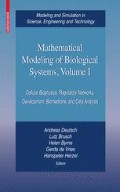Summary
We have shown for a dataset of computationally predicted alternative splice sites how inherent information can be utilized to validate the predictions by applying statistics on different features typical for splice sites. As a promising splice site feature we investigated the frequencies of binding motifs in the context of exonic and intronic splice site flanks and between the alternative and reference splice sites. We show that both partitions of splice sites can statistically be separated not only by their distance to the splice signal consensus but also via frequencies of splice regulatory protein (SRp) binding motifs in the splice site environment.
Access this chapter
Tax calculation will be finalised at checkout
Purchases are for personal use only
Preview
Unable to display preview. Download preview PDF.
References
Black, D.L.: Mechanisms of alternative pre-messenger RNA splicing. Annu. Rev. Biochem., 72, 291–336 (2003).
Boguski, M.S., Lowe, T.M., Tolstoshev, C.M.: dbEST–database for ‘expressed sequence tags’. Nat. Genet., 4, 332–3 (1993).
Bourgeois, C.F., Lejeune, F., Stevenin, J.: Broad specificity of SR (serine/arginine) proteins in the regulation of alternative splicing of pre-messenger RNA. Prog. Nucleic. Acid. Res. Mol. Biol., 78, 37–88 (2004).
Cartegni, L., Chew, S.L., Krainer, A.R.: Listening to silence and understanding nonsense: exonic mutations that affect splicing. Nat. Rev. Genet., 3, 285–298 (2002).
Cartegni, L., Wang, J., Zhu, Z., et al.: ESEfinder: A web resource to identify exonic splicing enhancers. Nucleic. Acids. Res., 31, 3568–3571 (2003).
Clark, F., Thanaraj, T.A.: Categorization and characterization of transcript-confirmed constitutively and alternatively spliced introns and exons from human. Hum. Mol. Genet., 11, 451–464 (2002).
D’Souza, I., Schellenberg, G.D.: Determinants of 4-repeat tau expression. Coordination between enhancing and inhibitory splicing sequences for exon 10 inclusion. J. Biol. Chem., 275, 17700–17709 (2000).
Elrick, L.L., Humphrey, M.B., Cooper, T.A., Berget, S.M.: A short sequence within two purine-richenhancers determines 5splice site specificity. Mol. Cell. Biol., 18, 343–352 (1998).
Fairbrother, W.G., Yeh, R.F., Sharp, P.A., Burge, C.B.: Predictive identification of exonic splicing enhancers in human genes. Science, 297, 1007–1013 (2002).
Galperin, M.Y.: The molecular biology database collection: 2005 update. Nucleic. Acids. Res., 33, D5–D24 (2005).
Graveley, B.R.: Sorting out the complexity of SR protein functions. Rna, 6, 1197–1211 (2000).
Graveley, B.R.: Alternative splicing: increasing diversity in the proteomic world. Trends. Genet., 17, 100–107 (2001).
Hertel, K.J., Graveley, B.R.: RS domains contact the pre-mRNA throughout spliceosome assembly. Trends. Biochem. Sci., 30, 115–118 (2005).
Hertel, K.J., Maniatis, T.: The function of multisite splicing enhancers. Mol. Cell., 1: 449– 455 (1998).
Hiller, M., Huse, K., Szafranski, K., et al.: Widespread occurrence of alternative splicing at NAGNAG acceptors contributes to proteome plasticity. Nat. Genet., 36, 1255–1257 (2004).
Humphrey, M.B., Bryan, J., Cooper, T.A., Berget, S.M.: A 32-nucleotide exon-splicing enhancer regulates usage of competing 5splice sites in a differential internal exon. Mol. Cell. Biol., 15, 3979–3988 (1995).
Konig, H., Ponta, H., Herrlich, P.: Coupling of signal transduction to alternative pre-mRNA splicing by a composite splice regulator. Embo. J., 17, 2904–2913 (1998).
Lander, E.S., et al.: Initial sequencing and analysis of the human genome. Nature, 409, 860–921 (2001).
Liu, H.X., Zhang, M., Krainer, A.R.: Identification of functional exonic splicing enhancer motifs recognized by individual SR proteins. Genes Dev., 12, 1998–2012 (1998).
Lou, H., Neugebauer, K.M., Gagel, R.F., Berget, S.M.: Regulation of alternative polyadenylation by U1 snRNPs and SRp20. Mol. Cell. Biol., 18, 4977–4985 (1998).
Maniatis, T., Tasic, B.: Alternative pre-mRNA splicing and proteome expansion in metazoans. Nature, 418, 236–243 (2002).
Modrek, B., Resch, A., Grasso, C., Lee, C.: Genome-wide detection of alternative splicing in expressed sequences of human genes. Nucleic. Acids Res., 29, 2850–2859 (2001).
Pospisil, H., Herrmann, A., Bortfeldt, R.H., Reich, J.G. EASED: Extended Alternatively Spliced EST Database. Nucleic. Acids Res., 32, D70–D74 (2004).
Ramchatesingh, J., Zahler, A.M., Neugebauer, K.M., et al.: A subset of SR proteins activates splicing of the cardiac troponin T alternative exon by direct interactions with an exonic enhancer. Mol. Cell. Biol., 15, 4898–4907 (1995).
Shen, H., Green, M.R.: A pathway of sequential arginine-serine-rich domain-splicing signal interactions during mammalian spliceosome assembly. Mol. Cell., 16, 363–373 (2004).
Smith, C.W., Valcarcel, J.: Alternative pre-mRNA splicing: the logic of combinatorial control. Trends Biochem. Sci., 25, 381–388 (2000).
Tacke, R., Chen, Y., Manley, J.L.: Sequence-specific RNA binding by an SR protein requires RS domain phosphorylation: creation of an SRp40-specific splicing enhancer. Proc. Natl. Acad. Sci. USA, 94, 1148–1153 (1997).
Tacke, R., Manley, J.L.: The human splicing factors ASF/SF2 and SC35 possess distinct, functionally significant RNA binding specificities. Embo. J., 14, 3540–3551 (1995).
Venables, J.P.: Aberrant and alternative splicing in cancer. Cancer Res., 64, 7647–7654 (2004).
Yeo, G., Burge, C.B.: Maximum Entropy Modeling of Short Sequence Motifs with Applications to RNA Splicing Signals. RECOMB‘03 April 10–13 Berlin, Germany (2003).
Zhang, M.Q.: Statistical features of human exons and their flanking regions. Hum. Mol. Genet., 7, 919–932 (1998).
Author information
Authors and Affiliations
Editor information
Editors and Affiliations
Rights and permissions
Copyright information
© 2007 springer
About this chapter
Cite this chapter
Bortfeldt, R., Herrmann, A., Pospisil, H., Schuster, S. (2007). Validation of Human Alternative Splice Forms Using the EASED Platform and Multiple Splice Site Discriminating Features. In: Deutsch, A., Brusch, L., Byrne, H., Vries, G.d., Herzel, H. (eds) Mathematical Modeling of Biological Systems, Volume I. Modeling and Simulation in Science, Engineering and Technology. Birkhäuser Boston. https://doi.org/10.1007/978-0-8176-4558-8_30
Download citation
DOI: https://doi.org/10.1007/978-0-8176-4558-8_30
Publisher Name: Birkhäuser Boston
Print ISBN: 978-0-8176-4557-1
Online ISBN: 978-0-8176-4558-8
eBook Packages: Mathematics and StatisticsMathematics and Statistics (R0)

